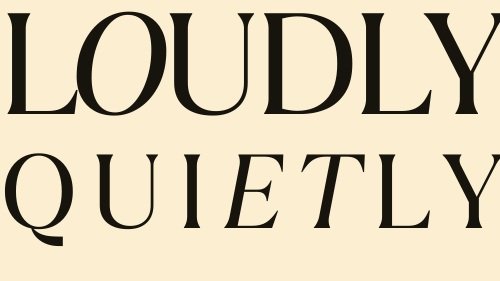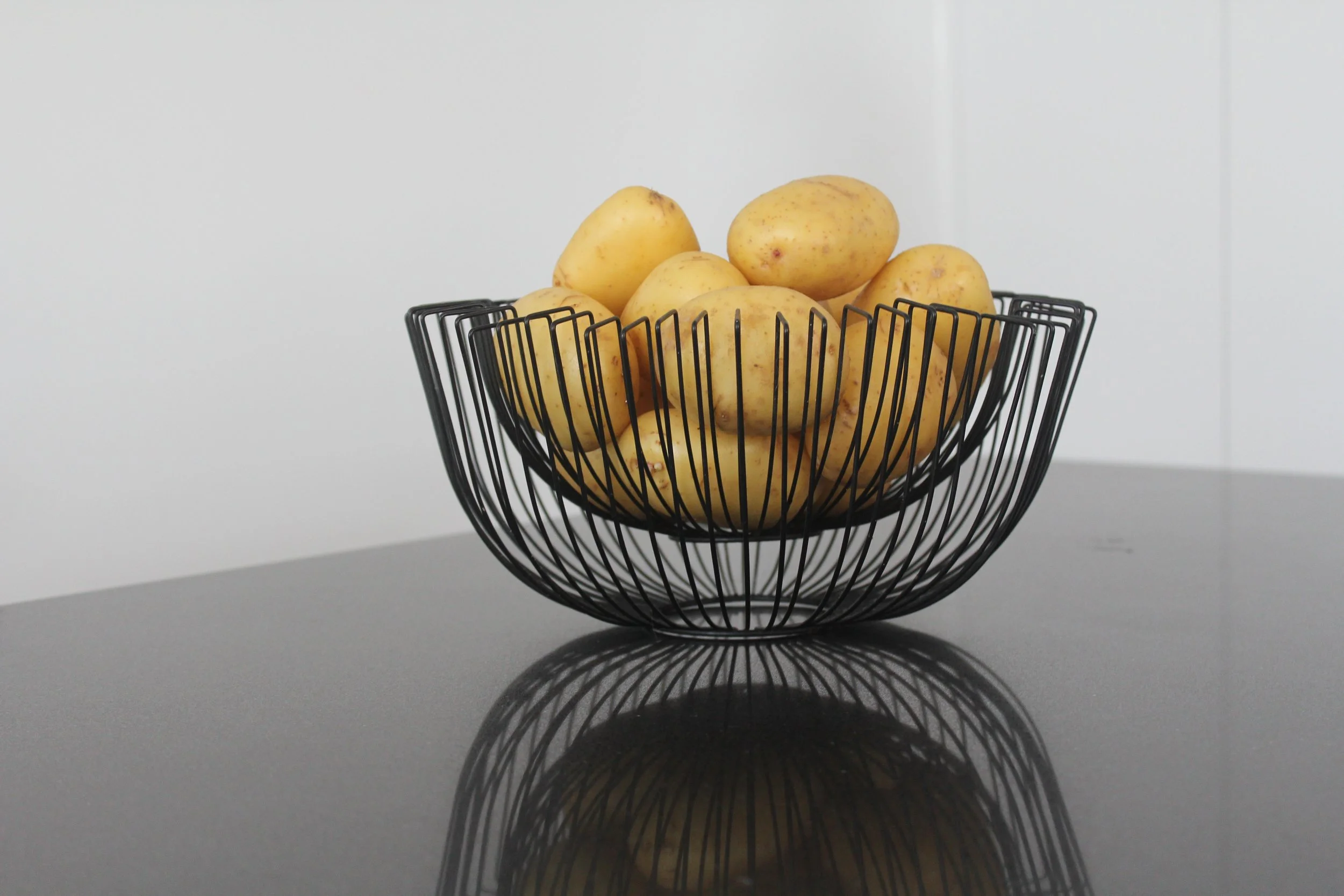Yes, You Are Creative
Words / Sophie Clement
Once upon a time, I believed that all creative people were wild and chaotic. Immune to routine and reason, they lived in my consciousness in colourful disarray, neurotic and drunk, splashing paint on canvases and singing love songs with abandon. They never studied or needed any direction, because art seeped out of their very being. Artists were beautiful in their chaos, bound to no man, effortless in their creative endeavours. So you’ll forgive me for thinking I didn’t fit in. Sure, I was plenty neurotic, especially when I was young, and I wrote a lot of intense poetry about the riot of emotions I felt weekly, daily, hourly, but I never felt creative enough.
I didn’t fit the mould, didn’t look and act like the artists surrounding me, who were single-minded in their devotion to create and had a seemingly inherent sense of what was beautiful and right. Whilst I stopped writing after one page, they created epic novels. When I deleted yet another picture, they displayed emotive exhibitions with confidence. As I played another screeching chord, they produced angelic symphonies effortlessly. I had none of their artistic fire and natural instinct - I didn’t live, breathe and die by art. Juxtaposed against these majestic beings, I was a tiny, insignificant human with little to offer. And this is the truth I believed for a long time, until I read a book called Big Magic.
Written by Elizabeth Gilbert, of Eat Pray Love fame, Big Magic details how creativity is a practice, an art of listening and routine and rhythm. It takes determination, constant practice and a willingness to learn. To put it lightly, Liz explains that the need to be chaotic in order to be creative is, frankly, bullshit. One of the concepts that struck me the most in Big Magic is that,
“Ideas have no material body, but they do have consciousness, and they are most certainly driven by will. Ideas are driven by a single impulse: to be made manifest. And the only way an idea can be made manifest in our world is through collaboration with a human partner.”
Liz talks about how ideas are like friends, who will visit for a day, a week, a month, a year, but who will tap someone else on the shoulder if you choose not to engage with them. It felt like a revelation to understand that inspiration was not mine to discover, that the only thing I had to do was be open and present enough to recognise when an idea tapped me on the shoulder, looking for a collaborator. And, contrary to my belief, Liz explains that you don’t have to be a tortured artist to partner with an idea. Sure, that method works, until it kills you in a tragic, glamorous fashion. In lieu of the drama, she suggests that you choose to co-operate fully, humbly, and joyfully with inspiration, understanding that anything that is bad for you is probably going to affect your relationship to creativity as well.
And so, with these revelations in mind, I ventured out to greet ideas with an open hand. Slowly, I shed my false beliefs about creativity and art, and chose instead to embrace experimentation and imperfection. Alone, in my bedroom, my backyard, my hallway, I listened, quiet and still, for the ideas around me. Sometimes, I missed them, distracted by the call of easier things like Netflix or chatting with friends. Other times, I caught a glimpse, and scribbled down the thought before it escaped me. Wherever I could, I reminded myself to lean in to ideas, not shy away in shame or fear. Encouraged by inspiration whispering in my ear, I painted and captured images, exploring the feeling of femininity and womanhood, loving the way light and shadow crossed my skin. I drew and I wrote, magical worlds spilling out of me, seeking adventure and asking questions that felt important and familiar. I played and dreamt in the sunshine, acknowledging my fears (first, reluctantly, then, gracefully), accepting them, and releasing them from my body to fly away and kiss the sun. I listened to everything, from the white noise of technology left idle to the sweet song of the birds in the trees, letting the sounds surround me in their embrace. The practice of learning began to feel simpler the more I did it, less constrained by feelings of inadequacy and doubt, released instead by a cautious optimism and sense of understanding that I did not need to know, and be, everything.
Thus, I began to see my lack of knowledge and my failures as an opportunity, instead of a burden. I don’t want to pretend this was an easy task, like I just looked upon yet another ill-painted canvas and thought, “Oh well, at least I’ve learnt something.” In reality, I swear a lot and cry sometimes and leave things unfinished for days and weeks on end. But I also grit my teeth, and get up again, and keep creating. I go to therapy, I take long walks through the hills and mountains, I meditate, I always eat a good breakfast, I pay attention to the energy of the people around me. All these things, the fundamentals of life, have been integral to my creative process, a far cry from the non-practices of the artists in my imagination. Ritualistically, I remind myself that an idea has tapped me on the shoulder, and I get the joy of running with it, of being the vessel through which it makes itself manifest. Part of this process is to engage, but also acknowledge when an idea is meant for someone else, freeing myself from the weight of always having to do or be. And always, I am learning that the worth of my contribution is not defined by time, or quality, or audience engagement, but by the willingness to participate, to press on, to soldier through the discomfort, boredom or failure that is un-sexy, but also deeply necessary.
“Once upon a time, I believed that all creative people were wild and chaotic. Immune to routine and reason, they lived in my consciousness in colourful disarray, neurotic and drunk, splashing paint on canvases and singing love songs with abandon. ”
Learning to embrace failure as an opportunity is anything but a linear path. It is more often a battle of will, an uphill climb in which I stumble often. Embracing failure is like realising that if I just let go of the mountainside, I’d discover I could fly, but I can only let go by lifting one finger at a time. Emotionally, it looks like acknowledging the story I have told myself about what it means to be creative, and actively choosing to believe in something different, something more positive and ultimately beautiful. It requires the examination of my beliefs about myself and about the world around me. It is a kaleidoscopic experience of intention. And more than that, it has been about equipping myself well, engaging in meaningful conversations with creative friends, buying quality equipment, seeking out lessons from the greats. Each of these things only add to the experience, not detract from it. In shedding my belief that I had to be fully independent in my creativity, I discovered that everyone who I had thought exited the womb with a paintbrush in hand had actually been nurtured by someone, or had nurtured their own artistic skill. And that failure was an inherent part of that process.
Here’s the truth: being creative feels like my soul is bared for the world to see. It feels vulnerable, and messy, and intense. As if by reading my words, or experiencing my art, you could understand me in a way that not many people do. There is nothing casual about it. And sometimes, I’m not comfortable with sharing that. In Big Magic, Liz says, “It’s okay if your work is healing for you, or fascinating for you, or redemptive for you, or if it’s maybe just a hobby to keep you from going crazy… Your own reasons to create are enough.” Maybe you’re like me, and art is an exposure of your inner self. Maybe you’re not. That’s the beauty of art right? Inspiration will take only what you are willing to give. An idea will only become manifest if you walk beside it, regardless of whether you share it with one person or thousands. And that is what set me free - knowing that my art was not just about me and my emotions, my successes, and failures, but about collaborating with an idea to make something beyond myself.
Hey, look, I think I got some things right. Being an artist can be chaotic, but only in the chaos of learning to make your emotions, your habits, your art, work for you, so that when an idea taps you on the shoulder, you’re ready and waiting. There is no requirement to be drunk, or beautiful, or relentless, or wild, although if that’s how you want to do it then more power to you. Really, the only thing required to be creative is to be open and willing. To be brave, to embrace an idea with warmth and say, “You are at home with me.” And then one day, a real-life friend might send you a message, and ask you to write a piece for her, and you’ll be ready.
Sophie is a dreamer, an abstract thinker, a socially-minded leader, a facilitator and problem solver, an all-around enthusiast, and a great lover of people. She writes as a way of engaging thoughtfully with the world around her, and to share the daily experience of being a young wahine in Aotearoa.











